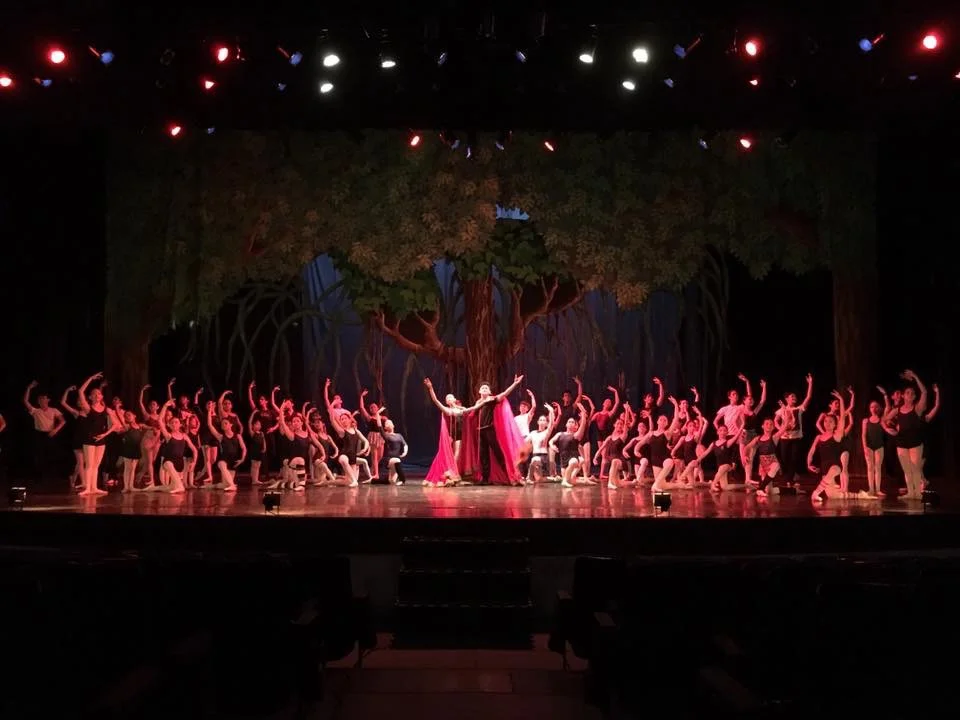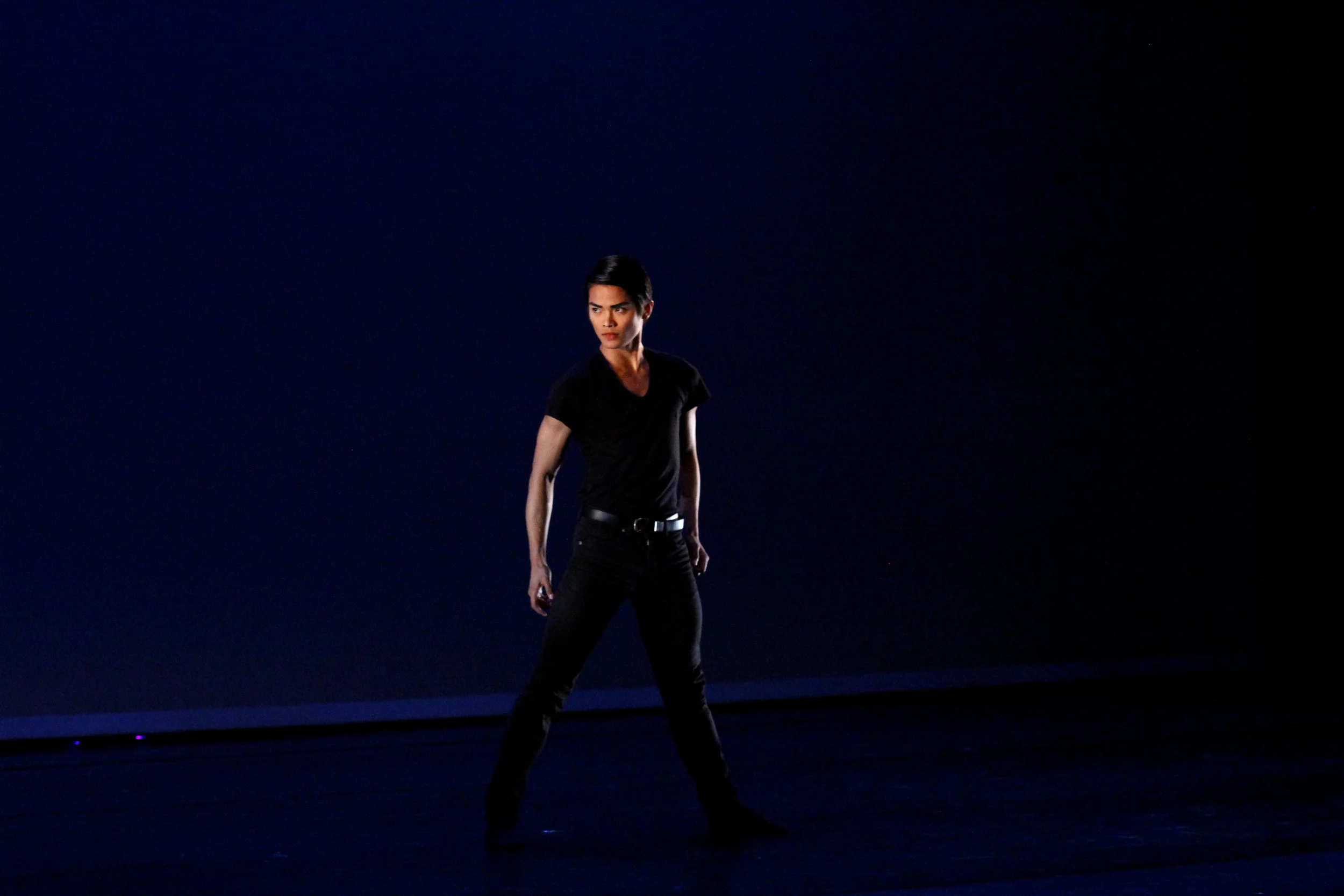Ballet Manila School at 20: Looking back and moving forward
Since opening in 1997, the Ballet Manila School – now officially known as the Lisa Macuja School of Ballet Manila – has trained thousands of girls in the Russian Vaganova method.
By Susan A. De Guzman
From the family lanai where weekly dance lessons were held to a school with two branches offering year-round ballet classes – that sums up the trajectory of the Lisa Macuja School of Ballet Manila. Now celebrating its 20th year, the school has produced six generations of dancers – with several becoming Ballet Manila company artists and teachers themselves, and a few even making it in the international dance arena.
Prima ballerina Lisa Macuja-Elizalde – or simply “Teacher Lisa” to her students –asserts the school’s role: “We have a legacy to nurture and commit to.” Photo taken by Jimmy Villanueva
For BM artistic director Lisa Macuja-Elizalde, the school she had dreamt of as a teenager has indeed come a long way. “I guess deep down I always knew that the Ballet Manila School was going to last for a long time,” says Lisa, even though she admits there have been many challenges over the years. “I knew that we had a legacy to nurture and commit to. And that the methods and culture of the BM School would train and create all the beautiful professional dancers in the company.”
The Ballet Manila School formally opened its doors in 1997, with classes being offered at the Elizalde compound in Pasay. But the beginnings of the school can be traced to almost a decade before, in the lanai of the Macuja home in Quezon City.
It was in that space where Lisa Macuja first started giving lessons in ballet. Writing in her memoirs, Ballerina of the People, Lisa says she felt a duty to share the Vaganova training she had learned in Russia with the young dancers back home.
Shortly after she returned in 1986, her father Cesar Macuja thus had their lanai converted into a makeshift studio. This was where, Lisa says, a handful of little girls trained with her every weekend. “Teaching was my very first ambition in life, so it’s not surprising that I naturally gravitated towards it even in the world of ballet. Even my own mentors in Russia acknowledged that I had the patience and propensity for teaching.”
The school’s directors and faculty when it officially opened in 1997. Photo courtesy of the Ballet Manila Archives
In the early 1990s, she and danseur Osias “Shaz” Barroso decided to start a scholarship program for teenage boys who wanted to undergo serious ballet training. This was largely fueled by the dearth in danseurs at the time. Their experimental project, done on a purely voluntary basis, called for them to conduct one and a half hours of daily classes. It was quite a success that the company they belonged to at the time adopted the program.
In 1995, Lisa and Shaz led ten other young dancers in forming the new group called Ballet Manila. Eventually, they knew, they would have to hold classes to tap potential dancers who could join the company.
At the start, Shaz says his main role was to create numbers their students could perform. “I choreographed for them actually. The first students I remember were Honeylet Ciabal with Marcus Tolentino, Aldrin Villanueva and Jerome Espejo. Gabriela Galvez was among them. I used Czerny and the piece was called Etudes. I wasn’t teaching until we moved to Donada!”
In 1997, with Lisa’s husband Fred Elizalde converting a pelota court at the family compound in Pasay into a studio, Ballet Manila settled into its new home. It also became the venue for what would be the Ballet Manila School which would open that summer.
“The first time we went to Donada, I choreographed Classical Impromptus to the music of Delibes. Sofie Sangco was there, Atea Ortiz, Zaira Cosico and Eric Añonuevo,” recalls Shaz, naming some of the school’s first batch of students, all of whom would later dance with BM.
The BM School’s first summer recital in 1997, held at the Cultural Center of the Philippines, featured the students as well as the company dancers led by Lisa and Shaz in the program Carmen and Other Ballets.
Osias Barroso has multi-tasked as a teacher, a dancer and a choreographer for the school’s summer workshops over the years.
In 1998, they held auditions for the first scholars of Ballet Manila. “Among them were Jonathan Janolo, Alvin Santos, Glen Ragel, Raymart Ramos, Francis Cascaño and Lemuel Capa,” Shaz enumerates. He recalls choreographing Enchanted Garden, the title of which was given by former BM artistic director Eric V. Cruz. It was also the first time the summer workshop recital would be called Just Dance!
Having that initial batch of scholars would pave the way for BM’s Project Ballet Futures, which today regularly takes in promising talents who are given free training, uniform and even vitamins.
For Shaz, who is practically a walking encyclopedia of BM history, the early years equate to particular dance pieces he choreographed for the school. In 1999, there was Ecole de Ballet (later shortened to Ecole) which shows the progression of students through years of ballet classes. Ecole has since become a staple in the summer recital and also in the company repertoire.
In 2000, there was Magical Bird set to music by Prokofiev, a piece which Shaz dedicated to his mother Anita Gepilano Barroso. In 2001, he did Masquerade to the music of Khachaturian. In 2005, he made Ballet Blanc with Nazer Salgado and Yanti Marduli as leads.
Shaz says he almost didn’t realize that twenty years had gone by for the school because he was focused on the daily training of the dancers, and because he enjoyed creating all those original choreographies.
The cover of the souvenir program of the Ballet Manila School’s final activity to cap its first summer workshop in 1997. Photo courtesy of the Ballet Manila Archives
In recent years, the school has enhanced its recitals. Instead of just presenting one number after another, students are cast in a production just like how it’s done in a company, with BM dancers making special appearances.
Shaz is proud that their students have been able to participate in international competitions like the Asian Grand Prix in Hong Kong and the national CCP Ballet Competition here in Manila where they have done exceptionally well. In 2016, four students who are also members of BM 2 – Nicole Barroso, Joshua Enciso, Alvin Dictado and Marinette Franco – represented the school at the Dance Open in Russia. In all these, the dancers are able to show the rigorous training they have undergone at the school.
Lisa considers as the school’s most significant achievement the superior training of dancers in classical ballet using the Vaganova method. “We’re happy that our students have excelled in both local and international competitions and have participated in major cultural and dance festivals all over the Philippines and abroad.”
In an effort to reach more students, the school opened a branch at Fisher Mall in Quezon City in 2016. Lisa also cites the headway gained by their Project Ballet Futures scholarship program that continues to search for and harness fresh talents. In addition, she makes note of the school’s outstanding alumni, Christine Rocas who has been with the Chicago-based Joffrey Ballet for many years, and Nazer Salgado who is a principal dancer with the Singapore Dance Theater.
The Ballet Manila School’s first batch of summer workshop participants. Photo courtesy of the Ballet Manila Archives
In the years to come, Lisa hopes that the school’s student population will continue to grow. “We also wish that our Project Ballet Futures will receive more support and that we will be able to open more branches to spread the methods that we advocate and the culture that we cultivate.”
Linkages with colleagues and dance institutions in other countries are also being strengthened. For a few years now, Shaz has been going annually to India in line with BM’s partnership with the Mumbai-based school Rhythmus Happy Feet in which teachers and students have been training in Vaganova. In 2016, Shaz and Lisa also conducted classes in Jakarta for ballet students. One of their goals is to establish the BM School as the learning institution for Vaganova in the Asian region.
For Lisa, it all boils down to passing on a revered art to new generations and ensuring that the tradition survives. The teacher in her simply wants to continue the mission she had set out to do in that lanai decades ago.
“There is a ‘aha’ moment for all teachers during class or rehearsals or performances wherein you see your students at a whole new level. When you realize that they understand their bodies and technique and are able to apply their knowledge into repertoire and daily classes. When you realize that they are retaining the numerous corrections you give them and are able to build onto them on their own.”






